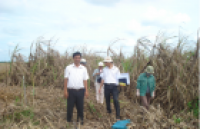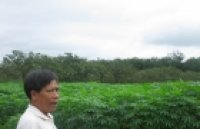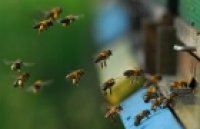| Utilizing transcriptomics and metabolomics to unravel key genes and metabolites of maize seedlings in response to drought stress |
|
In this study, we subjected the 3-leaf-period plants of two maize inbred lines, a drought-tolerant line (si287) and a drought-sensitive line (X178), to drought stress for seven days while growing in a chamber. Subsequently, we measured physiological traits and analyzed transcriptomic and metabolic profiles of two inbred lines. Our KEGG analysis of genes and metabolites revealed significant differences in pathways related to glycolysis/gluconeogenesis, flavonoid biosynthesis, starch and sucrose metabolism, and biosynthesis of amino acids. |
|
Yipu Li, Zhijun Su, Yanan Lin, Zhenghan Xu, Haizhu Bao, Fugui Wang, Jian Liu, Shuping Hu, Zhigang Wang, Xiaofang Yu, Julin Gao BMC Plant Biol.; 2024 Jan 8; 24(1):34. doi: 10.1186/s12870-023-04712-y. AbstractBackground: Drought stress can substantially restrict maize growth and productivity, and global warming and an increasing frequency of extreme weather events are likely to result in more yield losses in the future. Therefore, unraveling the molecular mechanism underlying the response to drought stress is essential for breeding drought-resilient crops.
Results: In this study, we subjected the 3-leaf-period plants of two maize inbred lines, a drought-tolerant line (si287) and a drought-sensitive line (X178), to drought stress for seven days while growing in a chamber. Subsequently, we measured physiological traits and analyzed transcriptomic and metabolic profiles of two inbred lines. Our KEGG analysis of genes and metabolites revealed significant differences in pathways related to glycolysis/gluconeogenesis, flavonoid biosynthesis, starch and sucrose metabolism, and biosynthesis of amino acids. Additionally, our joint analysis identified proline, tryptophan and phenylalanine are crucial amino acids for maize response to drought stress. Furthermore, we concentrated on tryptophan (Trp), which was found to enhance tolerance via IAA-ABA signaling, as well as SA and nicotinamide adenine dinucleotide (NAD) consequent reactive oxygen species (ROS) scavenging. We identified three hub genes in tryptophan biosynthesis, indole-3-acetaldehyde oxidase (ZmAO1, 542,228), catalase 1 (ZmCAT1, 542,369), and flavin-containing monooxygenase 6 (ZmYUC6, 103,629,142), High expression of these genes plays a significant role in regulating drought tolerance. Two metabolites related to tryptophan biosynthesis, quinolinic acid, and kynurenine improved maize tolerance to drought stress by scavenging reactive oxygen species.
Conclusions: This study illuminates the mechanisms underlying the response of maize seedlings to drought stress. Especially, it identifies novel candidate genes and metabolites, enriching our understanding of the role of tryptophan in drought stress. The identification of distinct resistance mechanisms in maize inbred lines will facilitate the exploration of maize germplasm and the breeding of drought-resilient hybrids.
See https://pubmed.ncbi.nlm.nih.gov/38185653/
Fig. 2 Overview of si287 and X178 transcriptome data after drought stress. (A), PCA of transcriptome samples. si287 and X178 were grown under well-water(W) and drought stress(D) conditions are indicated as different colour dots, respectively. (B), The number of totals, upregulated, and downregulated DEGs in the different comparison groups. (C), Clustering heatmap of DEGs. (D), Venn diagram of DEGs in the different comparison groups. |
|
|
|
[ Tin tức liên quan ]___________________________________________________
|


 Curently online :
Curently online :
 Total visitors :
Total visitors :
(270).png)


